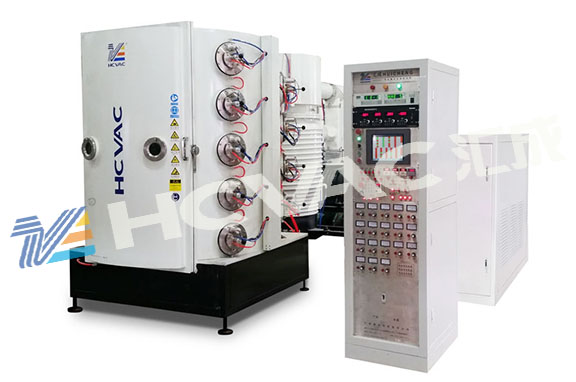Now many high-rise buildings, the outer walls are made of glass. People inside the building can see everything outside, but people outside the building can't see the inside. Why is this? In fact, these glass surfaces are coated with a layer film, so this effect occurs. Everyone should be able to encounter all kinds of coated glass. It is very popular to use this kind of glass, and it is also a trend. Today, the editor of Huicheng Vacuum will introduce you to the PVD coating of glass vacuum coating machine.

Explanation of some parameters of coated glass
E value: Emissivity.
Emissivity refers to the ratio of far infrared rays transmitted through glass to incident far infrared rays. The smaller the emissivity, the more heat is reflected back through the film, and the better the thermal insulation effect is. (E=0.0129R-6.7-5R2)
K value (U value): It refers to the amount of heat transfer through 1 square meter of insulating glass per unit time under stable heat transfer conditions, when the temperature difference between the air on both sides of the glass is 1 °C, expressed in W/m2K. The lower the K value, the better the thermal insulation performance of the insulating glass, and the more significant the energy saving effect.
G value: G value is the solar gain value (shading factor). It is a measure of the total solar transmittance. The southern region requires the lower the G value, the better, and the northern region requires the higher the G value, the better.
Several common membrane structures
1. Sunlight control film/TS, TE series
Features:
1. Easy to produce, difficult to control color difference, poor chemical stability;
2. Color: silver white, blue and brown;
3. Transmittance: 10~40%;
4. g value: 0.2~0.5;
2. Sunlight control film/SS series
Features:
1. Easy to produce, difficult to control color difference, poor chemical stability;
2. Color: silver white;
3. Transmittance:
8~20%;
4. g value: 0.2~0.3;



